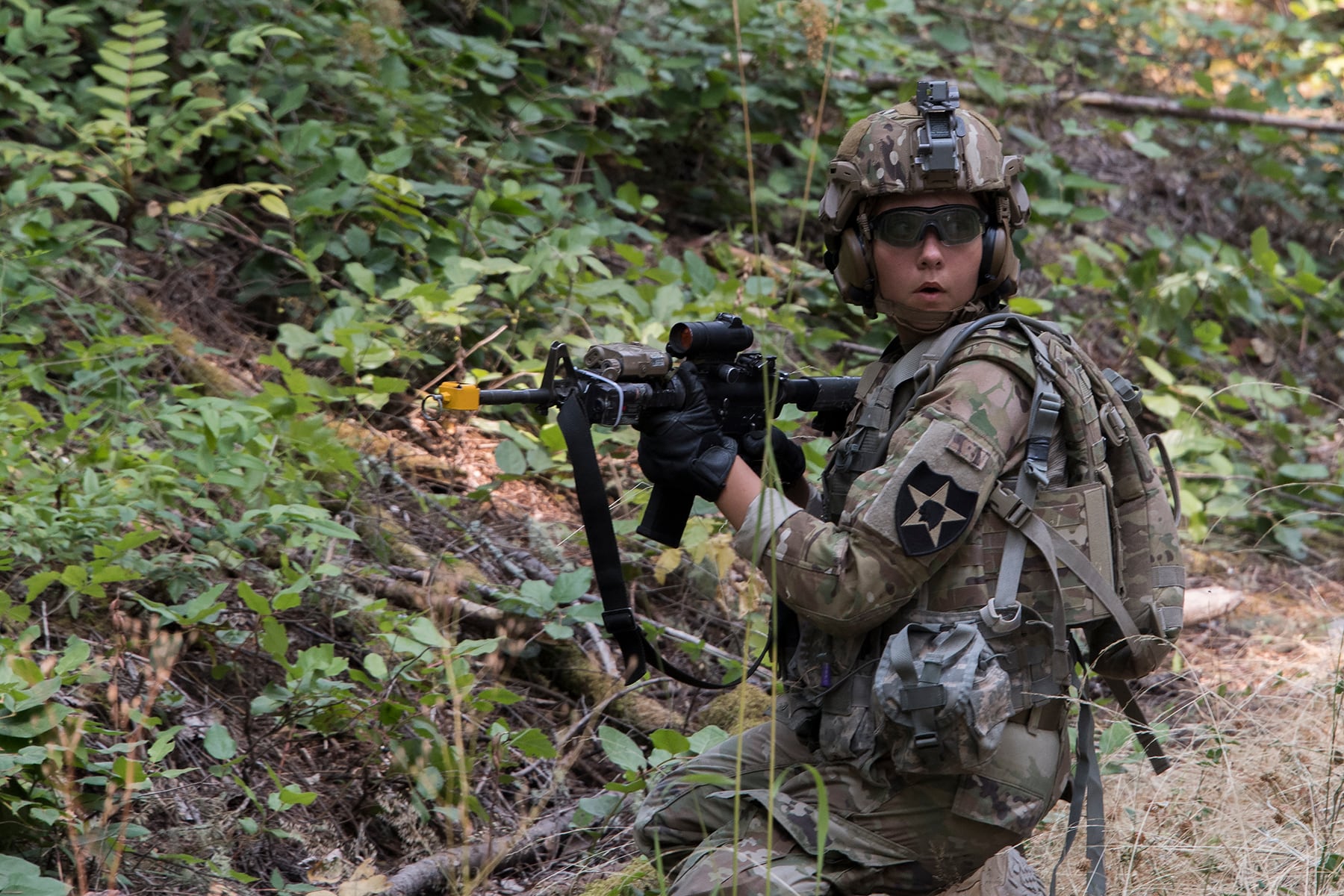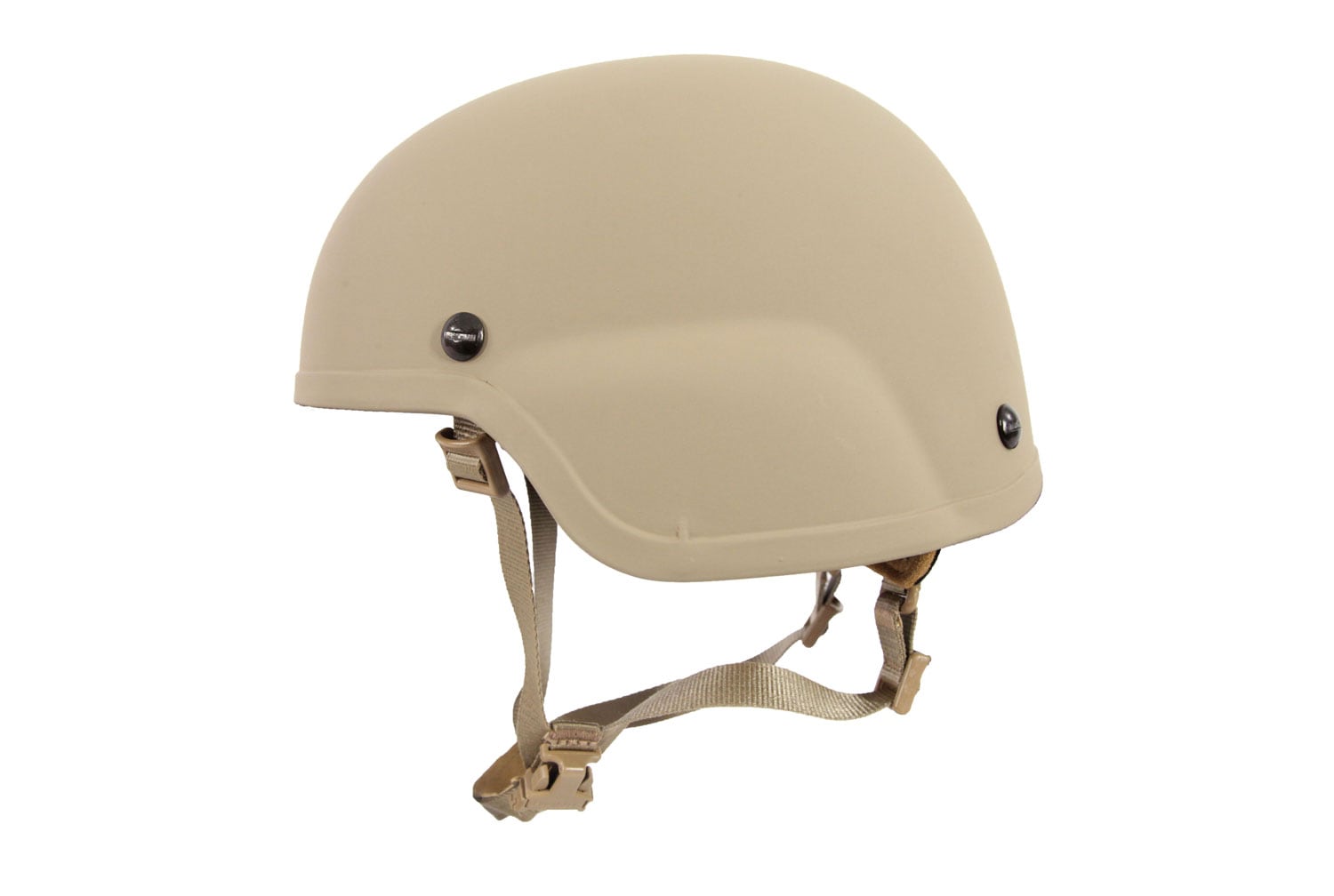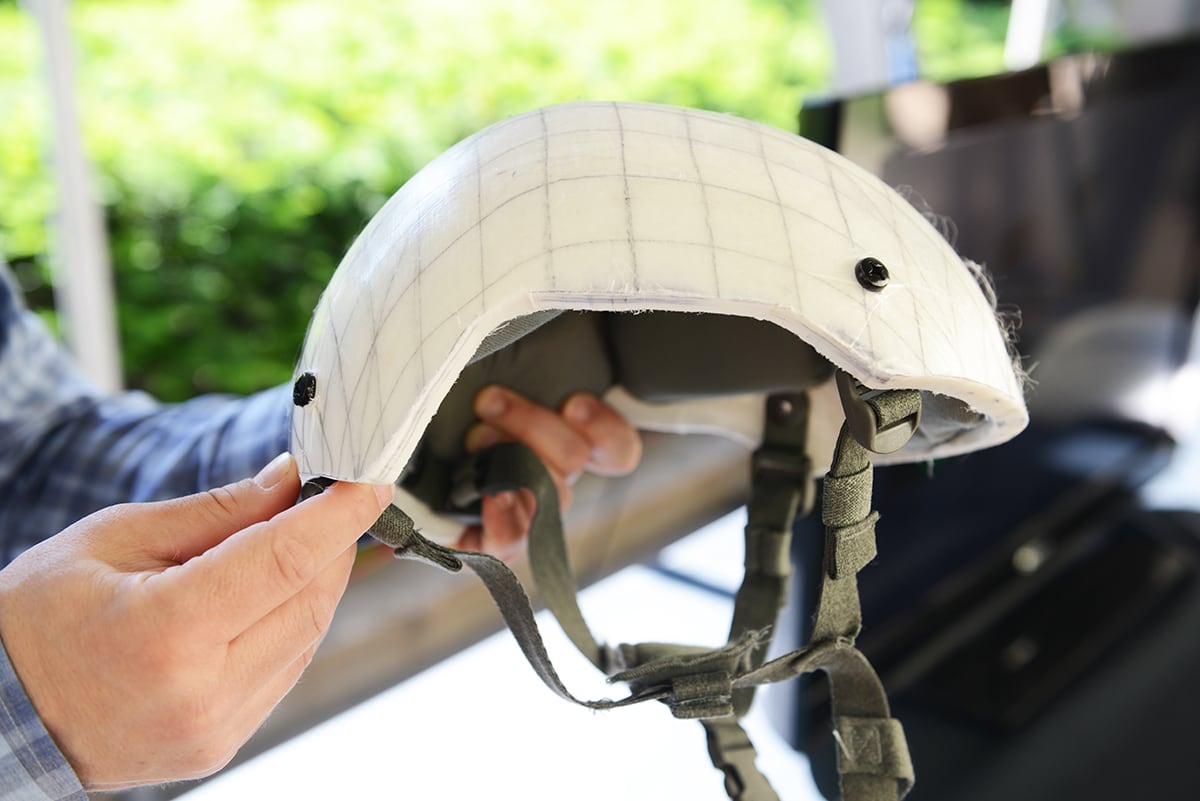In about a year, a helmet under development that shaves nearly half of the weight off soldiers’ current helmet and provides better protection will likely be on soldiers’ heads.
It uses the same materials, shedding an additional accessory currently fielded, all through a change in how the plastic used to make it is processed.
Developers with the Army’s Natick Soldier Research, Development and Engineering Center have recently showcased the NSRDEC Prototype Helmet after first sharing some of the work being done on the helmet last year.
RELATED

The NSRDEC helmet is made from ultra-high-molecular-weight polyethylene, which is lighter than Kevlar. The shell of the new helmet weighs 2.5 pounds and the final weight puts it at 3.25 pounds.
That’s 40 percent less than the current helmet configuration.
“There’s kind of a competition between increased threat and weight,” said Richard Green, the director of the Soldier Protection and Survivability Directorate at NSRDEC. “We want to protect against increased threat, while minimizing the weight. That’s our goal.”
The less weight the soldier carries on his or her head the less fatigue they have to deal with, especially over missions that can last anywhere from 12 to 18 hours.

And the new material process gives a 2-pound weight savings over the current Integrated Head Protection System, which the Army tested with airborne units last year and is now fielding. That system requires a “ballistic applique” that can provide rifle fire protection also, according to a Pentagon release.
The standard ACH Gen II helmet protects against 9 mm rounds and some fragmentation. But the new prototype adds rifle protection yet doesn’t need the modular applique for that addition as does the Integrated Head Protection System to provide similar protection to “prevalent rifle threat.”
Past iterations of modern combat helmets by type, performance, weight, material and year of introduction:
-Personnnel Armor System for Ground Troops (PASGT); Fragmentation; 3.56 lb; Para-Aramid; 1981
-Advanced Combat Helmet (ACH); Fragmentation and 9 mm; 3.31 lb; Para-Aramid; 2002
-Enhanced Combat Helmet (ECH); Fragmentation, 9 mm and rifle; 3.31 lb; UHMWPE; 2014
-Integrated Head Protection System (IHPS); Fragmentation, 9 mm and rifle (increased protection with Applique; 3.25 lb, 5.77 lb with applique; UHMWPE; 2016
-Advancted Combat Helmet GEN II; Fragmentation and 9 mm; 2.52 lb; UHMWPE; 2017
-NSRDEC Prototype Helmet; Fragmentation, 9 mm and rifle (without applique); less than 3.25 lb; UHMWPE; 2017 (prototype)
“The processing of that material has enabled us to optimize its performance,” said Kenneth Ryan, the Warfighter Protection branch chief at NSRDEC. “Decreasing the load helps optimize soldier performance, and that helps them to be more lethal.”
That processing provides more protection in a lighter package.
“It’s stronger, so you need less of it,” Green said.
Todd South has written about crime, courts, government and the military for multiple publications since 2004 and was named a 2014 Pulitzer finalist for a co-written project on witness intimidation. Todd is a Marine veteran of the Iraq War.









